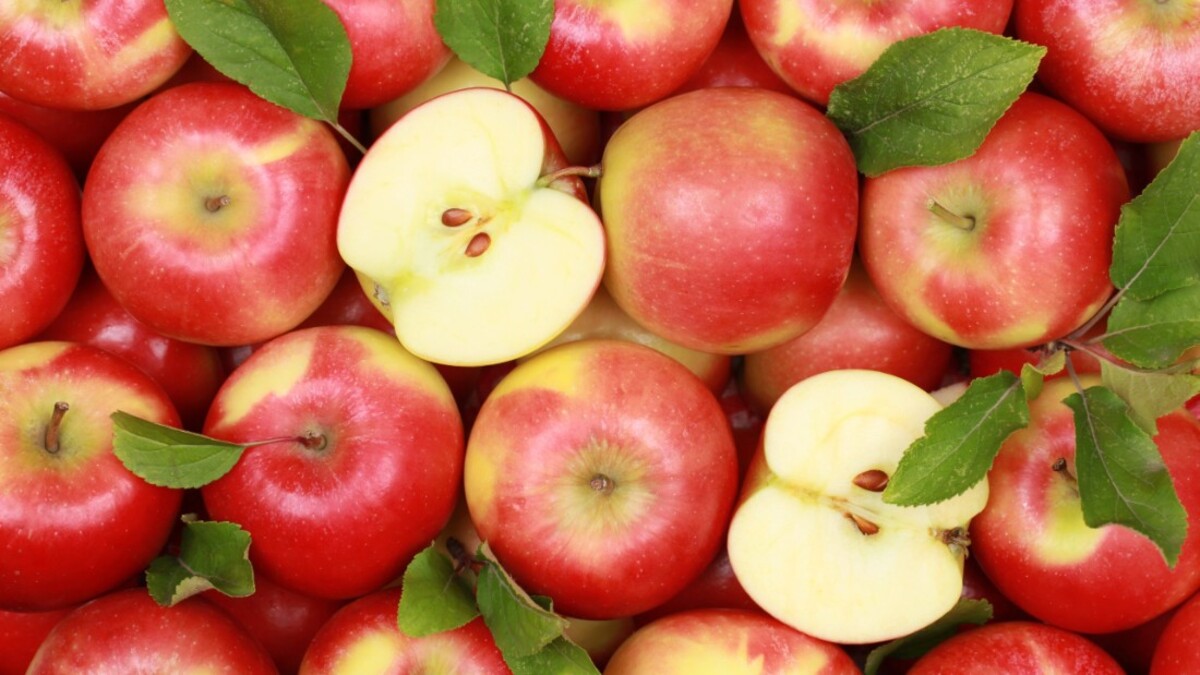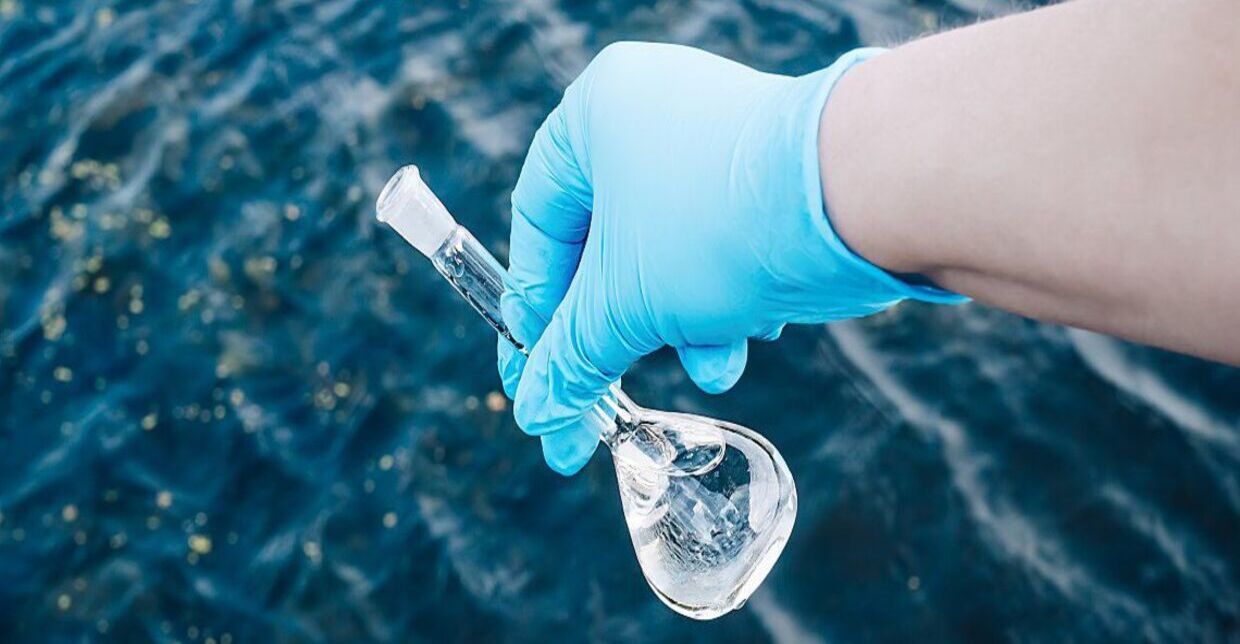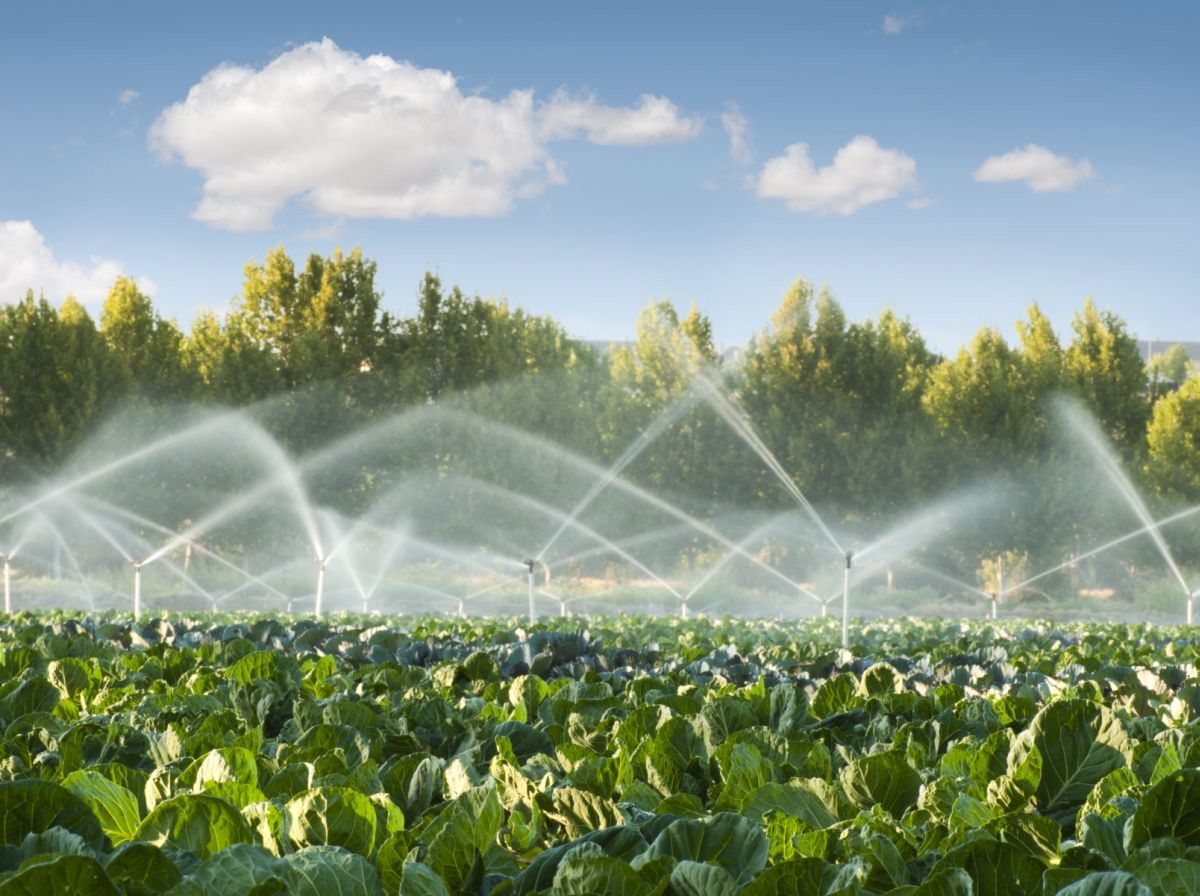Home>Gardening News and Trends>Latest News>How Were Pesticides Invented


Latest News
How Were Pesticides Invented
Modified: January 22, 2024
Discover the fascinating history of how pesticides were invented in this latest news article. Learn about their development and impact on agriculture.
(Many of the links in this article redirect to a specific reviewed product. Your purchase of these products through affiliate links helps to generate commission for Chicagolandgardening.com, at no extra cost. Learn more)
Table of Contents
Introduction
Welcome to the fascinating world of pesticides! These chemical solutions have played a crucial role in human history, transforming the way we protect crops, manage pests, and ensure food security. Pesticides are substances specifically designed to control, repel, or eliminate pests that can harm crops, humans, or the environment.
Throughout the ages, humans have been battling with pests that pose threats to our agricultural productivity and overall well-being. From ancient civilizations using various natural compounds to modern synthetic pesticides, the journey of pesticide development is a testament to our relentless pursuit of effective and sustainable pest management.
Pesticides have come a long way since their inception, and this article will delve into the fascinating evolution of these essential chemicals. We will explore the early use of pesticides, the discovery of synthetic alternatives, and the development of specialized insecticides, herbicides, and fungicides. Furthermore, we’ll discuss the environmental and health impacts associated with pesticide use and the regulations in place to ensure their safe and responsible application.
Lastly, we’ll touch upon the future directions of pest management, as scientists and researchers continuously strive to develop innovative methods that are more environmentally friendly and sustainable. So, let’s embark on this journey through history, science, and regulation to uncover the story behind the invention and evolution of pesticides.
Early Use of Pesticides
The use of pesticides is not a recent development; in fact, it dates back thousands of years. Early civilizations recognized the need to protect their crops from pests and devised various techniques to combat them.
One of the earliest known examples of pest control can be traced back to ancient Sumerians in Mesopotamia (modern-day Iraq) around 4500 BC. They used sulfur compounds to control insects and mites on their crops. The ancient Egyptians also employed a range of natural substances, such as arsenic compounds and plant-based extracts, to combat pests.
Interestingly, the Chinese civilization used predatory insects to control pests as early as the 3rd century BC. They recognized the benefits of introducing natural enemies of harmful insects, such as ladybugs and predatory mites, to maintain a pest-free balance in their agricultural ecosystems.
The Greeks and Romans were also actively involved in the use of pesticides. The famous Greek philosopher and scientist, Aristotle, advocated the use of tobacco leaves to repel fleas and lice. Meanwhile, the Romans discovered the insecticidal properties of mercury and lead.
During the Middle Ages, pests like rats carrying fleas became a significant threat. This led to the development of rat traps, the use of cats to control rodent populations, and the recognition of the importance of hygiene in preventing disease transmission.
While early civilizations primarily relied on natural remedies and biological controls, some also experimented with chemical substances. For instance, in the 17th century, sulfur was used to combat mites, and nicotine derived from tobacco plants was utilized as an insecticide.
The early use of pesticides laid the foundation for pest management techniques that evolved over time. These practices were largely based on trial and error, observations of plant and insect interactions, and the knowledge passed down through generations.
However, it’s important to note that these early pesticides were often crude and lacked specific knowledge of their potential environmental and health impacts. As we progress through history, we will explore the further development of synthetic pesticides and the scientific advancements that revolutionized pest control.
Discovery of Synthetic Pesticides
The discovery of synthetic pesticides marked a significant turning point in the history of pest management. It ushered in a new era of more effective and targeted pest control measures that revolutionized agriculture and public health.
The birth of synthetic pesticides can be attributed to the 19th century and the rapid advances in chemistry and technology. It was during this time that scientists began to explore the potential of synthetic compounds to combat pests and diseases.
In 1867, Swiss chemist Jean-Baptiste Dumas synthesized the first synthetic insecticide, pyrethrum, derived from the flowers of chrysanthemum plants. Pyrethrum proved to be highly effective against a wide range of insects and became a popular choice for pest control.
Another breakthrough came in the late 19th century with the discovery of Paris green, a copper-based compound used to control potato beetles. This compound was widely used for crop protection and remained in use well into the 20th century.
However, it was the landmark discovery of DDT (dichloro-diphenyl-trichloroethane) by Swiss chemist Paul Hermann Müller in 1939 that truly revolutionized pest control. DDT was highly effective against mosquitoes, lice, and other disease-carrying insects, making significant strides in the fight against malaria and typhus.
The widespread use of DDT and other synthetic pesticides led to a decline in insect-borne diseases and increased agricultural productivity. It was even hailed as a lifesaving chemical and earned Müller the Nobel Prize in Physiology or Medicine in 1948.
However, despite its immense benefits, DDT also raised concerns due to its environmental persistence and potential negative impacts on wildlife. Rachel Carson’s influential book, “Silent Spring,” published in 1962, highlighted the harmful effects of DDT and other pesticides on ecosystems and wildlife, sparking the modern environmental movement and leading to increased regulation and control of pesticide use.
Since then, many synthetic pesticides have been developed, each with specific properties targeting particular pests. These include organophosphates, carbamates, neonicotinoids, and pyrethroids, among others.
The discovery and development of synthetic pesticides have undoubtedly played a critical role in pest management. However, their use must be balanced with considerations for human health and the environment.
In the next sections, we will delve into the specific advancements in insecticides, herbicides, and fungicides, as well as the environmental and health impacts associated with their use.
Development of Insecticides
The development of insecticides has been a crucial aspect of pest management, targeting and controlling harmful insect populations that can devastate crops, transmit diseases, and disrupt ecosystems.
Following the discovery of synthetic pesticides like DDT, researchers focused on developing more specialized insecticides to effectively combat specific pest species while minimizing environmental and health risks.
Organophosphates and carbamates emerged as important classes of insecticides in the mid-20th century. They work by targeting the nervous systems of insects, disrupting their neurotransmitters and leading to paralysis and death. These insecticides offered broad-spectrum control and were used extensively in agriculture and public health to combat pests such as mosquitoes, aphids, and beetles.
However, concerns about the high toxicity of organophosphates and carbamates, as well as their negative effects on non-target organisms and the environment, led to the development of newer, safer alternatives.
One notable advancement came in the form of neonicotinoid insecticides, which were introduced in the 1990s. Neonicotinoids act on specific receptors in the insect nervous system, providing targeted control while minimizing impacts on mammals and birds. However, they have also faced scrutiny due to their potential role in pollinator decline and their persistence in the environment.
Other advancements in insecticide development include the use of biological control agents, such as Bacillus thuringiensis (Bt) and its genetically modified variants. Bt produces proteins that are toxic to specific insect pests, providing effective and selective control without harming beneficial insects or the environment.
The field of insecticide development has also seen innovations in formulation techniques that improve efficacy and reduce off-target impacts. These include microencapsulation, where active ingredients are encapsulated in tiny spheres to enhance stability and controlled release, and biopesticides derived from natural sources like bacteria and fungi.
It’s important to note that the development of insecticides continues to evolve, driven by the need for more sustainable and environmentally friendly solutions. Integrated Pest Management (IPM) approaches, which integrate various pest control tactics, including cultural practices, biological control, and targeted insecticide use, have gained prominence in recent years.
Researchers are also exploring alternative methods, such as pheromone-based attractants, genetic engineering, and RNA interference, as potential tools for pest control.
The ongoing development and refinement of insecticides exemplify our ongoing commitment to finding safe, effective, and sustainable solutions for pest management. However, it’s crucial to implement these insecticides judiciously, considering their potential impacts on non-target organisms, ecosystem dynamics, and long-term sustainability.
Advances in Herbicide Development
Herbicides have revolutionized weed control by providing targeted solutions to manage unwanted plants in various agricultural, industrial, and residential settings. The development of herbicides has seen significant advancements over the years, leading to more effective and environmentally friendly options for weed management.
Early herbicides consisted primarily of inorganic compounds, such as sulfur and arsenic, which were effective but had limited selectivity and posed risks to the environment. However, the discovery of 2,4-D (2,4-dichlorophenoxyacetic acid) in the 1940s ushered in a new era of selective herbicides.
2,4-D proved to be highly effective in controlling broadleaf weeds while being less harmful to grasses and other desirable plants. This selective action opened up possibilities for targeted weed management in various crop systems.
Following the success of 2,4-D, researchers continued to develop new classes of herbicides that provided even greater selectivity and effectiveness. Triazines, such as atrazine, were introduced in the 1950s and offered broad-spectrum control of grass and broadleaf weeds with minimal damage to crops.
In the 1970s and 1980s, the focus shifted towards reducing environmental persistence and introducing more environmentally friendly herbicides. This led to the development of glyphosate, an herbicide with a broad spectrum of control and low toxicity to mammals. Glyphosate, marketed as Roundup®, gained popularity and became one of the most widely used herbicides globally.
However, concerns about the potential impacts of glyphosate on ecosystems and the emergence of herbicide-resistant weeds have prompted the search for alternative herbicides and weed management strategies.
One significant advancement has been the development of herbicides with multiple modes of action. These herbicides target different physiological processes in plants, making it more difficult for weeds to develop resistance. By using herbicides with different modes of action in rotation or mixtures, farmers and land managers can reduce the selection pressure on weed populations.
Another noteworthy development is the increased emphasis on bioherbicides derived from natural sources, such as bacteria, fungi, and plant extracts. These bioherbicides offer an environmentally friendly alternative to synthetic herbicides and provide an additional tool for integrated weed management strategies.
Furthermore, advancements in herbicide formulation technology have improved the efficacy, stability, and safety of herbicides. Formulations such as emulsifiable concentrates, granules, and microencapsulation allow for better targeting and controlled release of active ingredients, reducing off-target impacts and enhancing weed control.
The future of herbicide development lies in the ongoing research and exploration of novel compounds and approaches. This includes the development of herbicide-tolerant crop varieties through genetic engineering and the investigation of potential herbicides derived from natural products and bioactive molecules.
As herbicide development continues to progress, it is crucial to consider the potential impacts on human health, the environment, and the emergence of herbicide resistance. Integrated weed management approaches, combining various tactics such as cultural practices, crop rotation, and mechanical weed control, will continue to be essential for sustainable weed management.
Evolution of Fungicides
Fungicides have played a vital role in protecting crops from devastating fungal diseases that can cause significant yield losses and impact food security. Over time, the development and evolution of fungicides have provided effective tools for disease management in agriculture.
The earliest fungicides can be traced back to ancient civilizations, where natural substances like sulfur, copper compounds, and plant extracts were used to control fungal pathogens. For example, ancient Egyptians used sulfur to protect their crops from molds and mildews.
During the 19th century, with the advancements in chemistry, researchers began to explore and develop synthetic fungicides. Bordeaux mixture, a combination of copper sulfate and lime, was one of the first widely used fungicides. It played a significant role in controlling diseases like downy mildew and blight in vineyards and other crops.
As the understanding of fungal diseases and their underlying mechanisms improved, researchers focused on developing more targeted and effective fungicides. Organomercury compounds were introduced in the mid-20th century and offered control against a wide range of fungal pathogens. However, due to their high toxicity and environmental persistence, their use was phased out.
In the 1960s, the discovery of systemic fungicides opened up new possibilities for disease control. Systemic fungicides are absorbed by plants and translocated to various plant parts, offering protection against both existing and future infections. This advancement revolutionized disease management in agriculture.
Triazoles and strobilurins are examples of systemic fungicides that have become cornerstones in disease control. They provide excellent control over a broad spectrum of fungal pathogens and have low environmental impact compared to older generation fungicides.
With the growing concern over environmental impact and human health risks, the demand for more sustainable and eco-friendly fungicides has increased. This has led to the development of biofungicides derived from naturally occurring microorganisms such as bacteria and fungi. Biofungicides offer targeted control against specific fungal pathogens while being safe for humans, beneficial organisms, and the environment.
Advancements in formulation technology have also improved the performance and efficiency of fungicides. Formulations like wettable powders, suspensions, and oil-based emulsions allow for better coverage and adhesion to plant surfaces, enhancing fungicide efficacy.
While fungicides have significantly contributed to crop protection, there are challenges associated with their use. Fungal pathogens can develop resistance to fungicides, making them less effective over time. To address this issue, integrated disease management strategies incorporating cultural practices, host resistance, and the rotation of fungicide classes are essential.
The future of fungicide development lies in the discovery of new active ingredients, the use of nanotechnology in formulation and delivery methods, and the exploration of natural compounds with fungicidal properties. These advancements will shape the next generation of fungicides, providing effective and sustainable solutions for disease management in agriculture.
Environmental and Health Impacts
The use of pesticides, including insecticides, herbicides, and fungicides, has undoubtedly provided numerous benefits in terms of increased agricultural productivity and disease control. However, it is crucial to recognize and address the potential environmental and health impacts associated with their use.
One of the primary environmental concerns is the potential for pesticide runoff and contamination of water bodies. Pesticides can be carried by rainwater or irrigation runoff, leading to the contamination of rivers, lakes, and groundwater. This contamination not only affects aquatic ecosystems but also poses a risk to drinking water sources and non-target wildlife.
Pesticides can also have negative impacts on non-target organisms, such as beneficial insects, birds, and mammals. For example, the use of insecticides can harm pollinators like bees and butterflies, crucial for crop production and ecosystem health. Similarly, herbicides can deplete habitat and food sources for wildlife, disrupting ecological balance.
Moreover, some pesticides, such as organophosphates and carbamates, can be highly toxic to humans and pose health risks to farmers, pesticide applicators, and consumers. Accidental exposure, inadequate protective measures, or improper handling of these chemicals can lead to acute poisoning or long-term health effects.
Chronic exposure to certain pesticides has also been associated with various health issues, including developmental disorders, reproductive problems, endocrine disruption, and certain types of cancers. Pregnant women, infants, and children are particularly vulnerable to the potential adverse effects of pesticide exposure.
In response to these concerns, regulatory agencies around the world have established guidelines and restrictions on pesticide use. These regulations aim to minimize environmental impacts, protect human health, and ensure the safe and responsible use of pesticides.
Integrated Pest Management (IPM) approaches have also gained prominence as a more sustainable and environmentally friendly alternative to excessive pesticide use. IPM combines various pest control strategies, such as monitoring, cultural practices, biological control, and targeted pesticide applications when necessary, to reduce reliance on pesticides and mitigate their potential impacts.
The development of safer and more environmentally friendly pesticide alternatives, including biopesticides, is also a significant area of focus. Biopesticides, derived from natural sources such as bacteria, fungi, and plant extracts, offer effective pest control with reduced risks to non-target organisms and the environment.
Education and awareness campaigns also play a crucial role in promoting responsible pesticide use. Providing training and information to farmers, pesticide applicators, and the public about proper handling, application techniques, and the potential risks associated with pesticide use can help minimize adverse impacts.
While pesticides continue to be valuable tools in pest management, it is essential to balance their benefits with careful consideration of their potential environmental and health impacts. Continued research, innovation, and informed decision-making are necessary to ensure the sustainable and responsible use of pesticides for a healthier environment and safer communities.
Regulation and Control of Pesticides
The regulation and control of pesticides play a crucial role in ensuring the safe and responsible use of these chemicals while minimizing their potential negative impacts on the environment, human health, and non-target organisms. Regulatory frameworks and control measures are in place to assess the safety and efficacy of pesticides and to monitor their use.
In most countries, pesticide regulation is overseen by government agencies, such as the Environmental Protection Agency (EPA) in the United States or the European Food Safety Authority (EFSA) in the European Union. These agencies are responsible for evaluating and registering pesticides, establishing tolerance levels for residues on food crops, and setting guidelines for proper pesticide use.
Before a pesticide can be legally marketed and used, it must undergo rigorous testing and evaluation to assess its potential risks and benefits. This includes toxicity studies to determine its impact on human health, environmental fate studies to assess its persistence and potential for bioaccumulation, and field trials to evaluate its efficacy against target pests.
Once a pesticide is approved for use, it is often subject to further monitoring and surveillance to ensure compliance with regulatory standards. This includes residue testing on crops and monitoring of environmental samples, such as water and soil, to detect any potential contamination.
Pesticide labels are an essential part of regulation and control. They provide information on proper handling, application rates, safety precautions, and restrictions to ensure the appropriate use of the pesticide. It is crucial for pesticide users to carefully read and follow the instructions on the label to minimize risks and maximize effectiveness.
Restrictions are also in place for certain pesticides that are identified as posing significant risks. For example, some pesticides may be classified as restricted-use, requiring certification or specialized training for their application to ensure proper handling and control of potential hazards.
As part of pesticide regulation and control, integrated pest management (IPM) strategies have gained recognition and support. IPM emphasizes the use of multiple pest management tactics, including cultural practices, biological control, and targeted pesticide applications when necessary. This approach reduces reliance on pesticides and promotes more sustainable and environmentally friendly methods of pest control.
Internationally, several agreements and conventions aim to harmonize and strengthen pesticide regulation across borders. For example, the Stockholm Convention on Persistent Organic Pollutants (POPs) aims to eliminate or restrict the use of certain highly toxic and environmentally persistent pesticides.
Regulation and control of pesticides continue to evolve, with ongoing efforts to improve and refine risk assessment methods, promote safer alternatives, and strengthen compliance and enforcement. Collaboration between governments, scientific communities, and industry stakeholders is essential for effective pesticide regulation and control.
By implementing and enforcing robust regulatory frameworks, monitoring pesticide use, and promoting responsible pesticide practices, we can ensure the safe and sustainable use of pesticides while protecting human health, the environment, and biodiversity.
Future Directions in Pest Management
The field of pest management is continuously evolving as researchers and scientists strive to develop innovative and sustainable approaches to control pests while minimizing the environmental and health impacts associated with traditional pesticide use. Future directions in pest management focus on integrated, holistic, and environmentally friendly strategies.
One key area of development is the advancement of biological control methods. Biological control utilizes natural enemies of pests, such as predators, parasites, and pathogens, to regulate pest populations. By harnessing the power of nature, biological control offers an effective and sustainable alternative to synthetic pesticides. Researchers are exploring the utilization of new biocontrol agents as well as improving the understanding of existing ones to enhance their efficacy.
Integrated Pest Management (IPM) approaches will continue to gain prominence in the future of pest management. IPM combines multiple tactics, including cultural practices, biological control, and targeted pesticide use, to manage pests effectively. This balanced approach reduces reliance on chemical pesticides and promotes long-term sustainability in pest management.
Furthermore, advancements in technology are shaping the future of pest management. Precision agriculture, using various technologies such as drones, sensors, and machine learning, allows for the targeted application of pesticides, minimizing the overall use and ensuring precise delivery to pest hotspots. This approach enhances efficiency, reduces environmental impact, and optimizes pest control strategies.
Genetic engineering has the potential to revolutionize pest management by introducing pest-resistant crop varieties or genetically modified insects that can suppress pest populations. This technology offers targeted control without relying on external interventions such as chemical pesticides. However, the ethical, environmental, and regulatory implications of genetic engineering must be carefully considered and assessed.
The use of pheromones and attractants shows promise as an alternative to traditional insecticides. By using pheromones, specific species or individual pests can be targeted, reducing the need for broad-spectrum chemical control. This approach is highly selective and environmentally friendly, minimizing the impact on beneficial organisms and ecosystem dynamics.
Advancements in data analytics and artificial intelligence are also revolutionizing pest management. By analyzing and interpreting data on pest populations, crop health, weather patterns, and other relevant factors, predictive models can be developed to anticipate pest outbreaks and guide proactive management strategies. This enables farmers and land managers to take timely and targeted action, minimizing the need for reactive pesticide applications.
The future of pest management also involves increased collaboration and knowledge-sharing among researchers, farmers, and industry stakeholders. By facilitating communication and cooperation, we can enhance the development, implementation, and adoption of sustainable pest management practices.
Education and awareness play a critical role in the future of pest management. Training farmers, agricultural professionals, and the general public on integrated pest management techniques, responsible pesticide use, and the importance of biodiversity conservation will help foster a more sustainable and environmentally conscious approach to pest control.
By embracing these future directions in pest management, we can strive for a balance between effective pest control, environmental protection, and human health, ensuring a sustainable and resilient agricultural system for future generations.
Conclusion
Throughout history, the invention and evolution of pesticides have played a significant role in pest management, protecting crops, enhancing food security, and combating disease-transmitting pests. From early natural remedies to the discovery of synthetic chemicals and the emergence of sustainable alternatives, the journey of pesticides has been marked by innovation and continuous improvement.
Early civilizations recognized the need to combat pests, using natural compounds and biological controls. With advancements in chemistry, synthetic pesticides were developed, leading to substantial advancements in pest control. However, concerns about environmental impacts and human health risks prompted the development of regulations and control measures to ensure their safe use.
The development of insecticides, herbicides, and fungicides has significantly improved the ability to target specific pests while minimizing non-target impacts. The emergence of systemic and selective pesticides has revolutionized pest management, providing effective control with reduced environmental risks.
As our understanding of the ecological and health impacts of pesticides has grown, integrated pest management (IPM) approaches have gained prominence, emphasizing the use of multiple tactics and reducing reliance on chemical pesticides. The future of pest management lies in the development of sustainable alternatives, such as biological controls, precision agriculture, genetic engineering, and innovative technologies.
It is essential to recognize and address the potential environmental and health impacts associated with pesticide use. Stringent regulation, monitoring, and education efforts are necessary to ensure the safe and responsible use of pesticides, protecting human health, ecosystems, and biodiversity.
As we move forward, collaboration between researchers, farmers, policymakers, and industry stakeholders will be vital in implementing sustainable pest management practices. By embracing integrated approaches, innovative technologies, and responsible pesticide use, we can achieve a balance between effective pest control, environmental preservation, and human well-being.
The future of pest management lies in our ability to continue advancing scientific research, enhancing sustainability practices, and promoting public awareness. By working together, we can ensure a healthier, more resilient, and sustainable agricultural system for generations to come.










